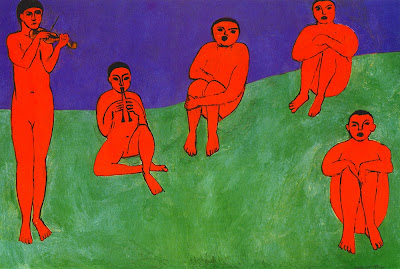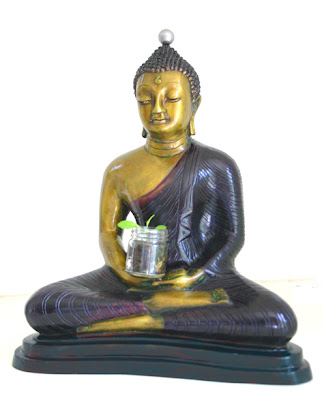
frida kahlo, self-portrait with thorn necklace and hummingbird
a few days ago, i spoke a good friend. and she said she admired my persistence in my artistic endeavour. because, she said, she would find it very hard to keep up the necessary motivation in similar circumstances.
to summarize: her perception is that i'm not getting so much recognition as an artist. and for her personally, the lack of such recognition would be a good reason to chuck it all in.
a double-edged compliment if ever i saw one :-) ! lucky for me, i have a different perception of recognition. as i wrote many times before, i'm not so impressed with the 'upper echelons' of contemporary art. that world is so much driven by fashion, money, competition, name dropping, and `entartainment', that real artistic merit often becomes irrelevant.
recognition for me comes in the many many people who have expressed to me personally that they were touched by one or more of my works. and also in the numerous fellow artists who have expressed their wonder at my themes and techniques. but it also comes from what my friend called aptly my inner compass. for me, i'm very content to be at a stage where things have been coming together for many years. for the first decade of my artist life, i was often frustrated by my lack of sufficient capability to create what i wanted to create. especially when painting, since drawing and sculpting mostly came reasonably naturally.
now, instead of frustration i'm often amazed at what comes out of the creative process. of course, on a different level i still lack all sorts of capabilities. but the difference is that this lack does not hinder me in creating works that evocate what i want them to. and that often amazes me, especially since a large part of this is beyond my conscious control. anyway, the gist is: i have enough inner compass to see that what i am doing has more quality than i could have hoped for twenty years ago...and that alone is enough recognition for me.
what in heavens' name does this have to do with frida kahlo, you wonder. well, you may not be aware that she garnered relatively little recognition during her lifetime. she was often seen primarily as the wife of the then-acclaimed artist diego rivera.
also this week, i borrowed a book from the library on 20th century latin-american art, wishing to expand my horizons a bit. only to find that frida's works were the only ones to really impress me. especially (but not only) her self-portraits are simply astonishing. [i restrict myself to showing only the above painting from wikipedia, since they are all copyrighted, and hope that its use is covered by the same fair-use policy as wikipedia's].
so, to sum it up for this post: recognition during one's lifetime is a happy circumstance for an artist. but let us be thankful that many artists have other considerations to create art as well.




